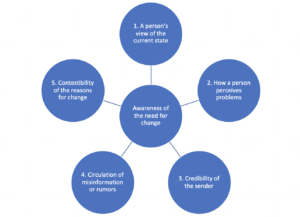
This week I listened to a colleague tell me that, three years ago, the company he worked for acquired another company of near equal size within the same industry. Within the last week, one of his peers from the acquiring company, a senior director with a large team, mentioned he was not sure why the acquisition occurred, whether or not there were any benefits, and what the impact was to his team.
Because very little information was shared, this acquisition represented a bigger and more complex product catalog and operating model to many employees, including senior leaders. This individual was angry that he was forced to change processes he was already comfortable with and was quoted saying “we need to go back to what we were doing before”.
What this individual didn’t know was that the acquisition introduced the opportunity for his company to remain competitive by improving experiences for customers, increasing scalability, expanding the product portfolio and adding customer segments. Few employees were aware of the opportunities and many shared the same negative view as this individual. Three years later, the attrition rate among employees has risen sharply, and the acquisition, which represented a sizeable investment, is seen by many as a waste.
This scenario was just one of many lately that remind me of the importance of some basic change management practices needed for organizations that are going through a shift, including changing how organizations function to meet the experience needs of customers and employees. In the example above, this individual didn’t have awareness of the need for change, and as a result, certainly didn’t have a desire to change.
Some of you may already be catching on to where I’m going with this – enter the ADKAR Model stage left. As Jeffrey M Hiatt, author of ADKAR: A Model for Change in Business, Government and Our Community, jokingly shares in his book, “all of our change initiatives would have gone great if it weren’t for all the people involved” (Hiatt, 2006, preface).
Hiatt’s book explains the ADKAR model, which focuses on the people side of change. This simple and powerful model runs on the idea that human change hinges on awareness of the need for change, followed by the desire to change, the knowledge of how to change, the ability to implement skills and behaviors required, and the reinforcement to sustain change. He provides a list of four questions that the typical person must be able to answer to have awareness of change.
But unfortunately, building awareness for change is not as simple as writing and sending out effective communication. Hiatt expands on these questions to five specific factors that are likely to influence how people perceive answers to these questions.
 A special note about #3: The why parts of the change should come from a top-level leader, but the how parts of change (e.g. how the change will occur and how it will impact people) are most effective when delivered by an immediate supervisor.
A special note about #3: The why parts of the change should come from a top-level leader, but the how parts of change (e.g. how the change will occur and how it will impact people) are most effective when delivered by an immediate supervisor.
Had the leaders at my colleague’s company cared for the human part of their organization’s change as outlined in this blog, employees would have heard directly from a senior leader about why the change was happening, how it aligns to the overall vision of the organization, and the risks of not changing. After hearing from a senior leader, employees would also have learned from their supervisor about how the change would impact them. This could have set the stage for an ongoing healthy dialogue about employee concerns and perceptions through the long-term change, which leaders could have continued to address.
While building awareness for the need to change is an important first step, it does not represent the decision to change. The decision (often more than a one-time decision) to participate with and support change requires desire, and so on down the model.
If you are not familiar with the ADKAR model and are influencing change in your role, consider adding this book to your list of 2020 must-reads, and please share back with me any experiences you’ve had using the ADKAR model.

